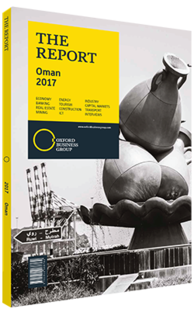Securities & Investment Company Oman's insurance sector equities analysis
Oman’s insurance market is highly competitive and fragmented, with a total of 22 insurance companies. Of these, 11 are local with the other 11 being branches of foreign insurers. The industry expanded at a robust rate of 12% per annum between 2010 and 2014, with total gross written premiums reaching $1bn by the end of the period. The sector is well capitalised with a capital-to-asset ratio of more than 30%.
Insurance penetration, defined as the ratio of insurance premiums to GDP, was around 1.3% in 2014, which was lower than the GCC average of 1.4% and significantly below the global average of 6.3%. As such, the future outlook of the sector is positive due to the significant potential to grow by tapping underpenetrated markets in the sultanate.
Market Structure
Motor and health insurance are the two largest insurance segments in Oman. The former accounted for 35% of total gross direct premiums in 2015, while the latter made up another 27%. Other important lines of coverage include marine, property and engineering. The retention rate – the percentage of written premiums retained by the insurer – remains high in the two main segments, at 87% for the motor insurance business and 54% for health insurance providers.
National Life and General Insurance Company is at present the largest underwriter in the sultanate in terms of gross written premiums.
Challenging Times
The last two years have been challenging for the insurance industry. Total net profits of insurance companies in the sultanate decreased from OR26.1m ($67.8m) in 2014 to OR15.6m ($40.5m) in 2015. Competition has therefore intensified in what was already a fragmented market, resulting in lower pricing for insurance products and diminishing profits for underwriters.
The macroeconomic slowdown resulting from lower global oil prices has caused new car sales to drop significantly, and this has adversely affected premiums received from the motor insurance sector, which is the largest insurance segment in Oman.
At the same time, health care expenses have gone up in Oman, while health care premiums have declined, putting pressure on insurers’ profitability in the second-largest line.
Investments
A further challenge to the operating environment has occurred stemmed from the capital markets. Insurance companies’ investment portfolios have been negatively affected by the decline in oil prices that started in 2014. Total investment income of all Omani insurers fell from OR14m ($36.4m) in 2014 to OR11m ($28.6m) a year later. This has primarily been a result of decreasing share prices of local and regional equities. However, the declines were partly mitigated by increased yields on fixed-income instruments, which usually account for the largest portion of underwriters’ investment portfolios.
Takaful Potential
There are two takaful (Islamic insurance) companies in Oman: Madina Takaful and Takaful Oman. They were launched in 2013 and listed on the Muscat Securities Market through initial public offerings in 2014, after the government of Oman created the necessary framework for Islamic banking, insurance products and related services. The takaful industry has been on a high growth trajectory since its inception. In 2015 the sharia-compliant segment of the industry grew by 68% as compared to 2014. In terms of market share, it accounted for 9% of all gross direct premiums and 5% of all gross paid claims in 2015.
As takaful companies are required to invest exclusively in sharia-compliant assets, the two operators experienced some challenges initially as there were few Islamic investments on offer in the country. However, with the issuance of government and corporate sukuk (Islamic bonds) over the past year, takaful providers have an increasing range of investment options in which to place their excess liquidity.
You have reached the limit of premium articles you can view for free.
Choose from the options below to purchase print or digital editions of our Reports. You can also purchase a website subscription giving you unlimited access to all of our Reports online for 12 months.
If you have already purchased this Report or have a website subscription, please login to continue.

